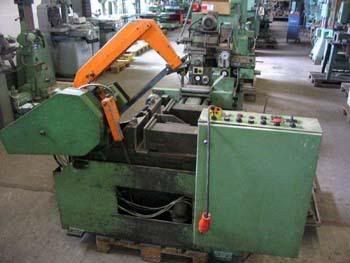|
|
Post by colincott on Jul 22, 2008 9:35:28 GMT
It is easier than that and all you need is one mat be two carving tools, that is after you have made the moulding. You can use a scratch stock or a 405/ 45 to make the moulding in one piece. I am a little busy at the mo but will make some in the workshop and take some pics of how to do it, from solid wood to finished moulding.  |
|
|
|
Post by RogerM on Jul 22, 2008 10:48:42 GMT
Thanks Colin - that would be brilliant. I don't have the combi plane shown which is why I suggested using a suitable router bit.
|
|
|
|
Post by colincott on Jul 22, 2008 22:59:47 GMT
That would do it and if you let me know how big the moulding comes up, I can make mine about the same  |
|
|
|
Post by RogerM on Jul 23, 2008 11:34:58 GMT
Colin - let's work on the basis of a 1/2" moulding. It's the technique that interests me at this stage rather than the precise dimensions, although I fully expect to use 1/2". Thanks.
|
|
|
|
Post by ''The village idiot'' on Jul 23, 2008 12:22:28 GMT
Would you like me to run you out some 12mm oak double edged parting bead on the spindle moulder, this will only leaves the pips to carved ? By starting with a double edged parting bead it means you will have more to hold on to while carrying out the carving then split the moulding and you have two cats eye mouldings.
|
|
|
|
Post by RogerM on Jul 23, 2008 13:48:53 GMT
That's a very kind offer TVI. However, at this stage at least, much of the pleasure comes from learning new techniques that I can apply myself - so in view of cost of router cutters, and the fact that I am never going to need 100s of metres of beading, I may just buy a s/h combi plane - say a Stanley #50 - which will be way cheaper than a set of router bead cutters of various sizes, and kinder on the neighbours ears as well.
I look forward to seeing Colin's offering, but may come back to you later. Many thanks.
|
|
|
|
Post by ''The village idiot'' on Jul 23, 2008 16:27:54 GMT
To give you some idea of cost; A pair of cutters for the spindle moulder will cost £21.95 plus timber plus delivery. Labour £25.00 plus cutters |
|
|
|
Post by ''The village idiot'' on Jul 23, 2008 18:56:04 GMT
If I was to produce such a moulding I would run the timber through the spindle moulder so I had four beads on a single piece of timber, at the same making allowance for the cutting. I would do it this way as it is easier to hold / clamp a larger piece of timber than a small piece. I would then cut the pips by mounting the cutter in a pillar / bench drill and hand carve the remainder. Finally split into four on the table saw. See drawing it may help to explain it a littler better. |
|
|
|
Post by Scrit on Jul 27, 2008 11:49:35 GMT
The "pipped" moulding was probably produced in the way that VI states. A "pip" or "rosette" cutter is simply ground-up from a discarded thick backsaw blank and held in a rosette chuck. The sort of hacksaw blades I'm talking about are what you'd see on something like a Kasto saw at a steel merchants. Here's a small one (I once worked somewhere we had one of these beasties with a 3in wide blade):  If the piece of furniture was a production piece then the linenfold panels would more than likely have been worked by making up a cutter to run in the thicknesser. Prior the WWII many thicknessers had square cutter blocks which allowed them to both thickness and panel mould, hence their description as "panel planers" in many catalogues. Oddly there was an echo of this in British thicknessers manufactured right up until the 1990s as it was often possible to specify 2-knife cutter blocks capable of taking a pair of profile cutters at one end (for machining skirtings, architraves, etc) and is why many post-war machines have holes drilled in the ends of the thicknesser beds to take guide strips (and before anyone asks, this generally applied only to machines of 18in and wider capacity). The end detailing of the linen fold could have been worked on a recessor, a spindle moulder with a flush-top spindle, or from the 1920s onwards a high speed overhead router in all cases with the use of a template jig. Final cleaning-up would be done by hand, even in a large factory. In smaller workshops I should imagine a one off piece of linen fold would be best worked using a selection of rounds and hollows with the top and bottom detailing being carved and any recessing worked with a router plane Scrit |
|
|
|
Post by RogerM on Jul 31, 2008 18:26:18 GMT
Thanks Scrit - interesting stuff. In view of the short piece needed I've decided to cut a bead with a combi plane and form the pips by hand with an appropriate gouge. Thanks for all the interest shown tho' - it's all part of the learning curve.
|
|